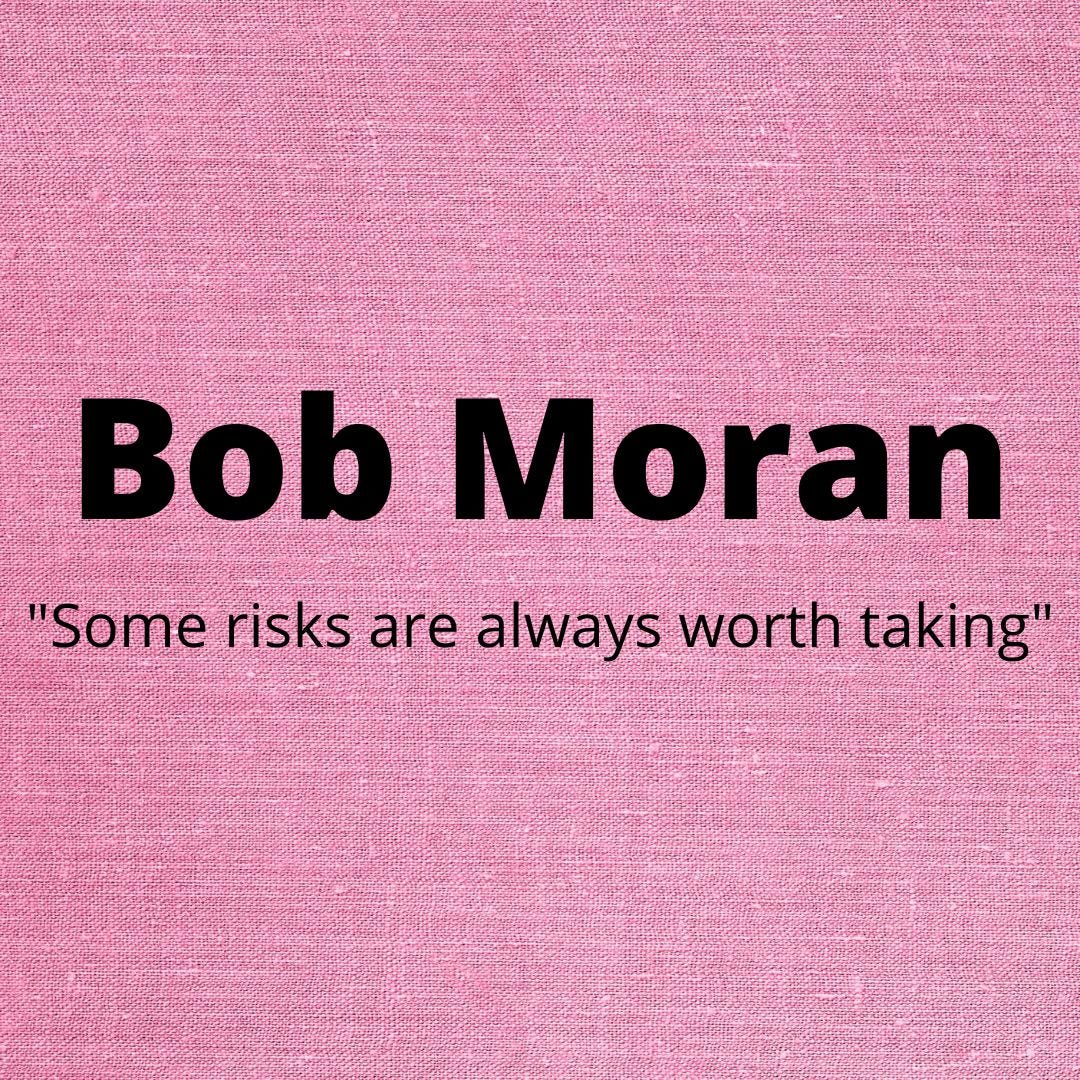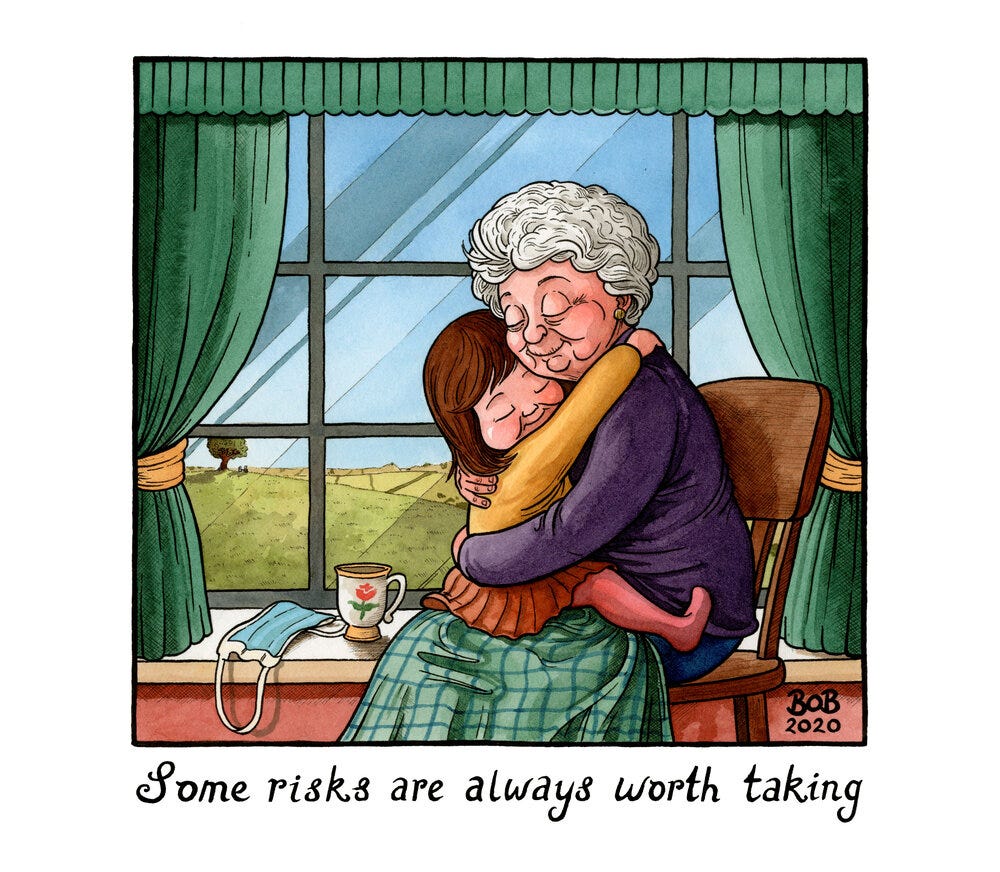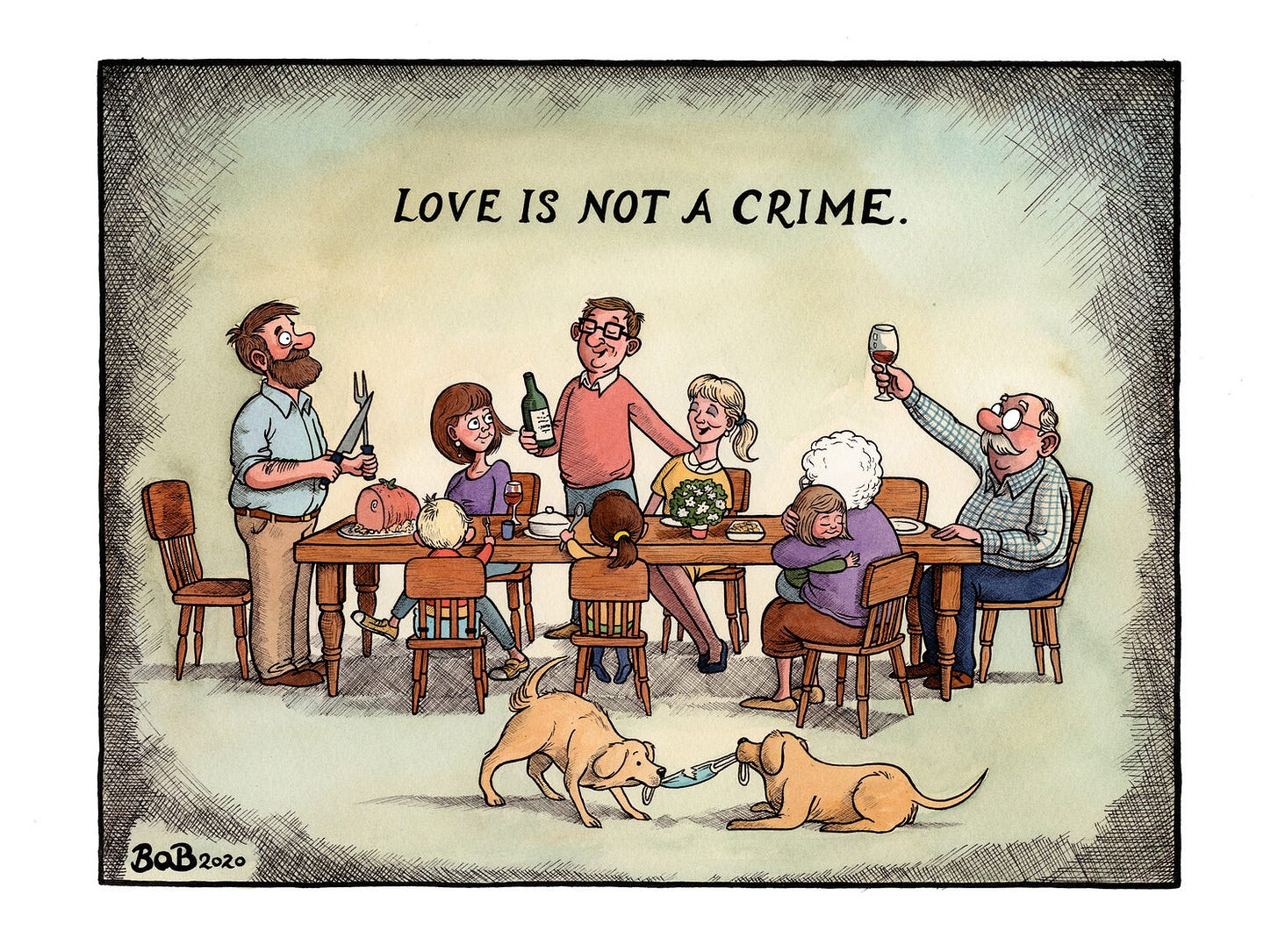I think I bumped into the clip above about 6 months ago. I’ve lost count of the number of times I’ve watched it.
When I first saw it, and because of his suit and tie, I thought he was a government whistleblower or a new political independent. I only recently figured out that this is Bob Moran.
I’ve been in love with his art for a long time and have only now put the art and the face together.
I think this was the first of his artworks I saw, and I knew that the painter knew, what was going on.
Here is his page will all his artwork, with the most recent at the top. I’m very happy for him that they are selling, and for good money.
What prompted me to write this stack in Bob’s honour is this recent 51-minute profile on him. It’s when I connected the dots and realised who the guy in the above clip was.
Brilliantly Difficult Film — Bob Moran art
It’s a wonderful profile of the man and his historic work during the GMC: Global Medical Crisis.
At minute 26:45 he says this following gem, articulated as only Bob seems to be able to do, with a slow calm cadence that has the force of a sledgehammer.
He explains his thinking behind his very first artwork.
Part of the point of that was the risk isn't very different to the risk they've always lived with, but grandparents and elderly people want to see their families, they want to see their grandchildren. That's what matters to them, not longevity.
And so, absolutely, that risk is worth taking.
And we've all taken it for hundreds of years. And we're all still here. If we'd obsessively tested and attributed death to these things and recorded it, we're probably all guilty of murder somewhere along the line, we’ve probably all given something to someone who killed someone else. And we didn't make children feel guilty about it.
We didn't say that was an unacceptable level of risk because we knew that to address it, to try and eradicate it would be to destroy the things that matter and basically create an insane society.
That last line is worth repeating:
“We knew that to address it, to try and eradicate it would be to destroy the things that matter and basically create an insane society.”
The “it” he is referring to in this passage is obviously the risk of infecting grandma with a bug.
But the higher level “it” that this passage sits under is what the technocrats and The Science call “externalities”. We are going to hear a lot about externalities over the coming years.
Dictionary.com defines it as:
“A side effect of some process or activity, especially a negative effect of an economic activity that is not accounted for in the price of what is produced.”
In other words, something that I do, that is NOT “accounted” for that impacts others.
Said another way, something the individual does that impacts the collective.
Said another way, something that I do that negatively impacts the greater good.
The system that is being built around us is one that will use the concept of externality to control, influence and ultimately coerce and mandate behaviour.
For example: I was booking a Qantas flight a few weeks ago, and before the booking process was complete the website went out of its way to tell me how many kilograms of carbon my trip was going to put into the climate and if I wanted to spend some points to “offset” the effect.
The kilos of carbon are the externality, instantly and efficiently calculated and presented to me in a manner that would play on any sense of guilt I had, and/or my desire to be a good community member and global citizen.
The next step is for it to be involuntary, and every kilo of carbon is calculated and charged, explicitly, to each flyer.
The next step is to give me a “kilo allowance” for the year, and once I or my family has used it, I am not able to fly until a new year and new kilo-allowance rolls over.
But as Bob just said: “to address it, to try and eradicate it would be to destroy the things that matter and basically create an insane society.”
Externality and Spontaneity are related and connected and in some ways are two sides of the same coin. To be human, is to be spontaneous and in so doing you will impact others and the whole.
I just finished with Hannah Arendt’s The Origins of Totalitarianism, it’s far more and far better than I imagined. It was published in 1951 but she is describing today.
Among the many things that I read and understood for the first time is her mention of Spontaneity and how Totalitarian systems despise it.
One of the most glaring differences between the old-fashioned rule by bureaucracy and the up-to-date totalitarian brand is that Russia's and Austria's pre-war rulers were content with an idle radiance of power and, satisfied to control its outward destinies, left the whole inner life of the soul intact. Totalitarian bureaucracy, with a more complete understanding of the meaning of absolute power, intruded upon the private individual and his inner life with equal brutality. The result of this radical efficiency has been that the inner spontaneity of people under its rule was killed along with their social and political activities, so that the merely political sterility under the older bureaucracies was followed by total sterility under totalitarian rule.
--
The camps are meant not only to exterminate people and degrade human beings, but also serve the ghastly experiment of eliminating, under scientifically controlled conditions, spontaneity itself as an expression of human behavior and of transforming the human personality into a mere thing, into something that even animals are not; for Pavlov's dog, which, as we know, was trained to eat not when it was hungry but when a bell rang, was a perverted animal.
--
Those who aspire to total domination must liquidate all spontaneity, such as the mere existence of individuality will always engender, and track it down in its most private forms, regardless of how unpolitical and harmless these may seem. Pavlov's dog, the human specimen reduced to the most elementary reactions, the bundle of reactions that can always be liquidated and replaced by other bundles of reactions that behave in exactly the same way, is the model “citizen” of a totalitarian state; and such a citizen can be produced only imperfectly outside of the camps.
We are going to need to think about “camps” differently.
Forget about what you have been watching on the history channel and forget about the Covid quarantine camps that were built. Although she was describing concentration camps, she wasn’t describing the buildings, but instead the spiritual goal of the buildings. A place where we all become the same, we are all Pavlov’s dog, where spontaneity dies. That description of spiritual and psychological objective is what’s relevant today from her work. Human spontaneity was the most despised quality then, and in this new world they are building it is shaping up to be that most despised quality again.

And lastly on Bob’s lockdown clip.
What he is describing is what I felt on day one of this fiasco, that it was morally wrong. You cannot steal from people to save some others from a respiratory virus. You cannot murder some people (steal their life) to potentially and theoretically save some others.
Which reminds me of one of my all-time favourite passages:
On Theft
“There is only one sin, only one. And that is theft. Every other sin is a variation of theft. When you kill a man, you steal a life... you steal his wife's right to a husband, rob his children of a father. When you tell a lie, you steal someone's right to the truth. When you cheat, you steal the right to fairness... there is no act more wretched than stealing.” ― Khaled Hosseini, The Kite Runner
Bob mentions 200,000 (and then the UK revised it to up to 500,000) to be killed to save…
But when viewed through a global lens and now we can add in the deaths caused by the global poisoning campaign we are into the millions.
This is a comment from Yeadon on 21 August 2022 on this article:
Indeed. Estimates by people who I regard as level headed compute estimates of those who’ve died as a consequence of injection with these superfluous, ineffective & toxic materials stretches into high single, low double millions of Human beings, many of whom in all probability had years to decades of healthy life ahead.
These estimates discount to zero the possibility that delayed pathogenic events may translate to further waves of premature deaths.
They also ignore new lives lost or completely forgone.
Finally, no account is made here of the misery of non-lethal injury & the anguish they and those who care for them or are cared for by them suffer.
In that long list of pathologies I include implicitly here is perhaps the most devastating impact: sucking out of the joy from almost every life on the planet, well aware they don’t know the answer to the question “What is next to arrive at my door & those of my family & friends?”
It looks like they killed about 10m people so far, and maimed and injured 100s of millions.











Share this post